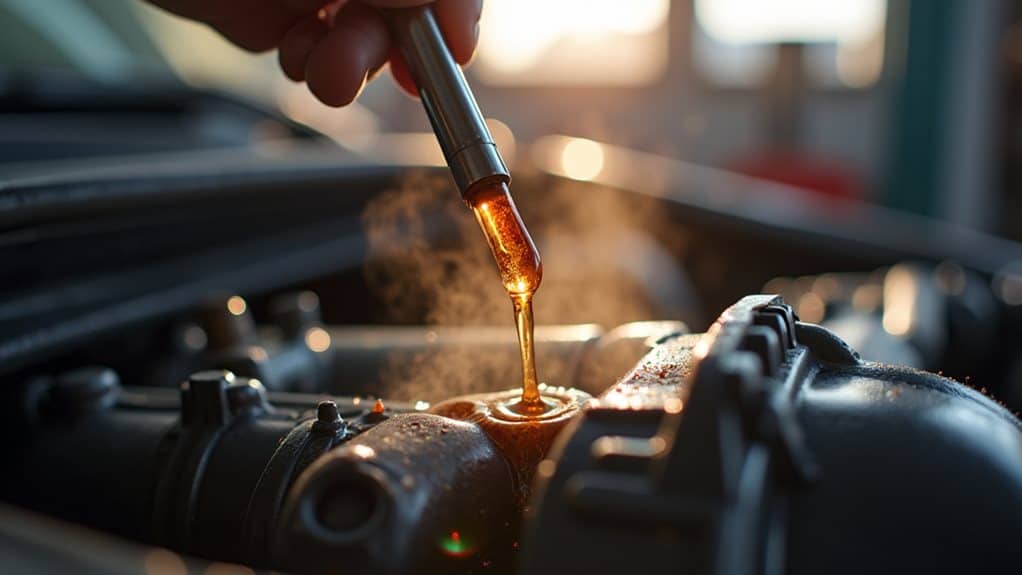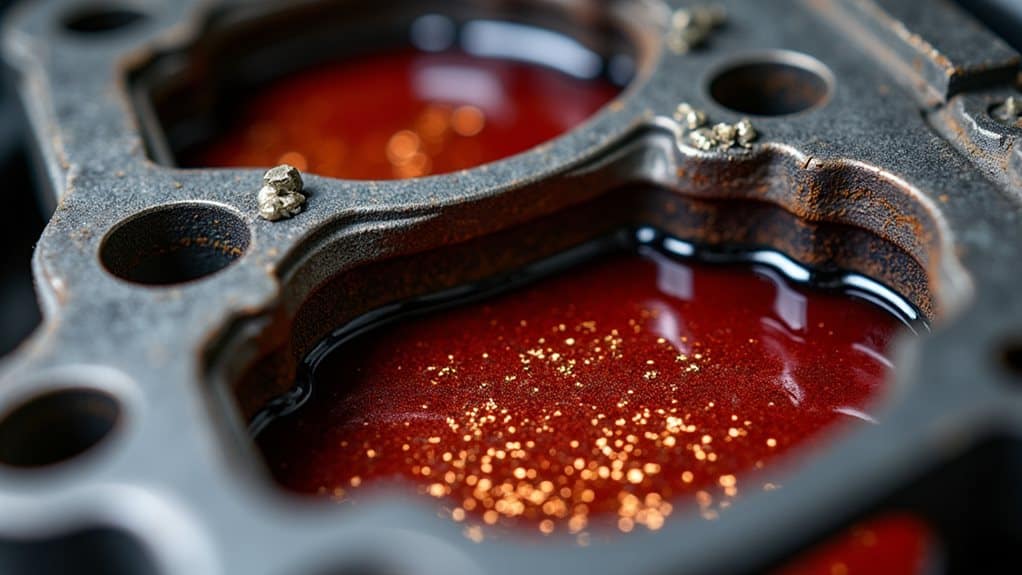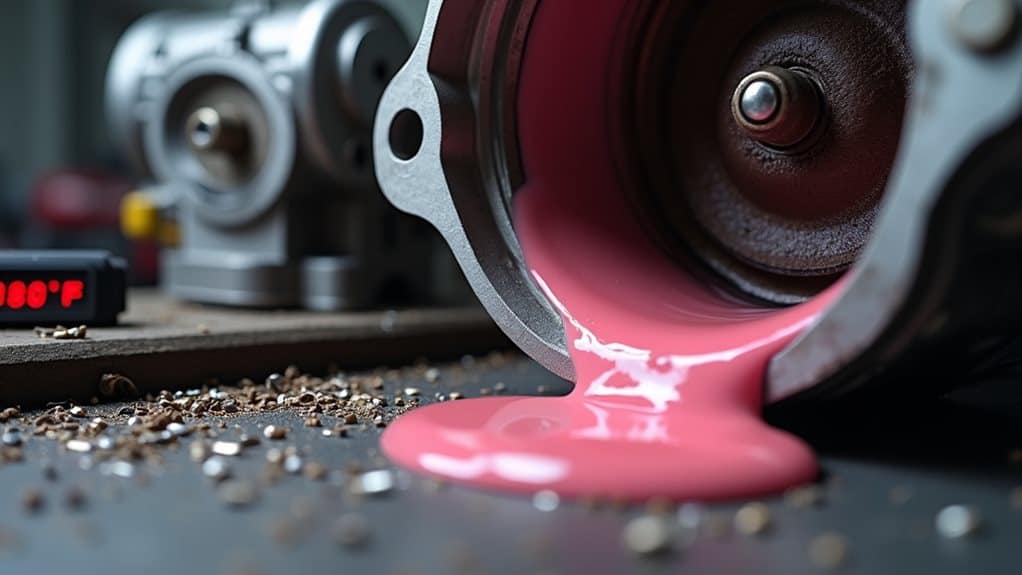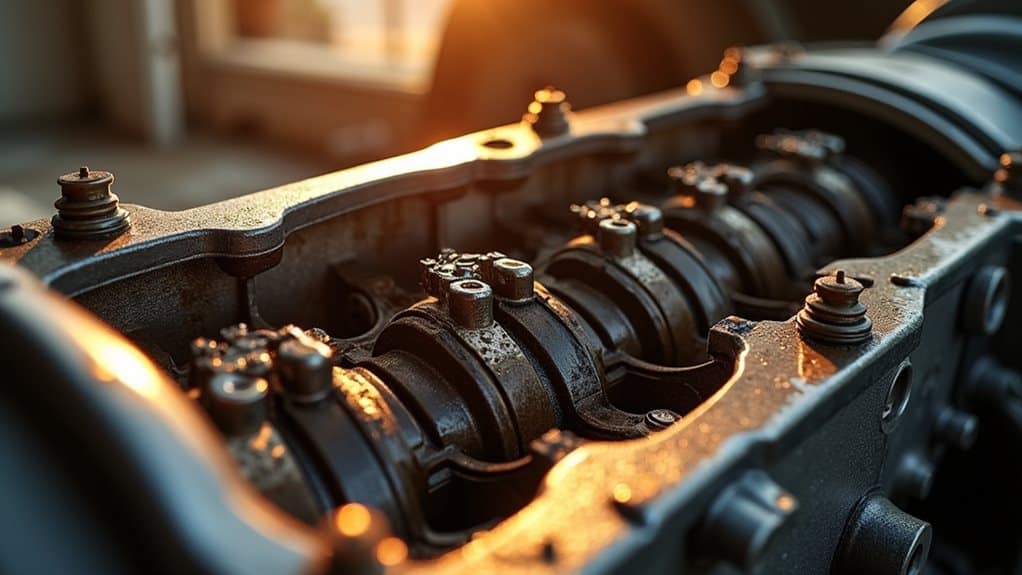If your transmission shifts smoothly when cold but develops problems as it warms up, you’re likely dealing with deteriorating transmission fluid or worn internal components. When cold, thickened fluid and contracted parts mask these issues, but as temperatures rise, thinning fluid and expanded components reveal underlying problems. Common symptoms include delayed shifts, burning odors, and unusual noises during gear changes. Understanding the relationship between temperature and transmission behavior will help you identify and address potential issues before they worsen.
Quick Tips
- Transmission fluid breakdown from excessive heat causes shifting problems once the fluid reaches higher operating temperatures.
- Worn transmission bands and clutches may function adequately when cold but slip when warm due to thermal expansion.
- Low transmission fluid levels perform normally when cold but cause inadequate pressure and slipping once heated.
- Faulty solenoids work properly when cold but malfunction at higher temperatures due to electrical resistance changes.
- Deteriorated seals contract when cold maintaining pressure, but expand and leak when warm causing shifting issues.
Understanding Cold vs. Warm Transmission Behavior

While your transmission might seem to work perfectly when you first start your vehicle, understanding how it behaves differently in cold versus warm conditions is essential for maintaining its health.
When cold, your transmission’s fluid thickens, components contract, and shifting becomes harder. As it warms up, the fluid thins out, parts expand to their proper size, and your transmission’s computer adjusts its operation accordingly. This can lead to overdrive being delayed until your transmission reaches its optimal operating temperature. Additionally, if your cooling system has excess pressure, it can impact the overall performance of your vehicle, including the transmission’s efficiency during operation.
Common Signs Your Transmission Has Temperature-Related Issues
When your transmission begins exhibiting temperature-related problems, you’ll likely notice several distinct warning signs that shouldn’t be ignored.
You might detect a burning odor, experience delayed or slipping gear shifts, or see red fluid leaking underneath your vehicle. This leaking fluid may indicate potential transmission fluid leaks that require immediate attention.
Watch for warning lights on your dashboard, and pay attention to any unusual noises or vibrations during acceleration and gear changes. These issues often worsen as your vehicle’s transmission overheats, potentially leading to complete system failure if not addressed promptly.
Key Causes of Temperature-Dependent Shifting Problems

Temperature-dependent shifting problems in transmissions often stem from a complex interplay of mechanical and fluid-related issues.
Your transmission fluid’s deterioration under high temperatures can severely impact shifting performance, while low fluid levels often lead to overheating.
If you’re experiencing shifting problems, faulty cooling systems, transmission fluid leaks, and excessive heat buildup from stop-and-go traffic could be the culprits. Additionally, transmission fluid issues can exacerbate these problems, leading to further complications in gear shifting as the vehicle warms up.
Essential Diagnostic Steps for Warm Transmission Problems
Understanding why your transmission shifts poorly after warming up starts with proper diagnostic steps.
Begin by checking your transmission fluid’s color and smell while monitoring the temperature conditions when problems occur.
Use an OBD scanner to check for error codes, then conduct a thorough visual inspection for leaks around seals and components.
Pay special attention to any unusual noises or burning odors. Additionally, consider the impact of starter motor issues that can affect overall engine performance, potentially leading to transmission problems.
Prevention and Maintenance Solutions

Proper transmission maintenance serves as your first line of defense against warm-shifting problems.
You’ll need to check your transmission fluid levels regularly and guarantee they’re clean and at the correct level.
Follow your manufacturer’s maintenance schedule for fluid changes, and don’t overlook the importance of a properly functioning cooling system, which prevents the transmission from overheating during operation.
Wrapping Up
Temperature-dependent transmission issues shouldn’t be ignored, as they often indicate deeper mechanical problems that’ll worsen over time. You’ll need to address low fluid levels, worn clutches, or solenoid problems promptly to prevent costly transmission failure. If you’ve noticed your vehicle shifting differently when warm, consult a qualified mechanic for proper diagnosis and repair. Regular maintenance, including fluid checks and changes, remains your best defense against transmission troubles.

